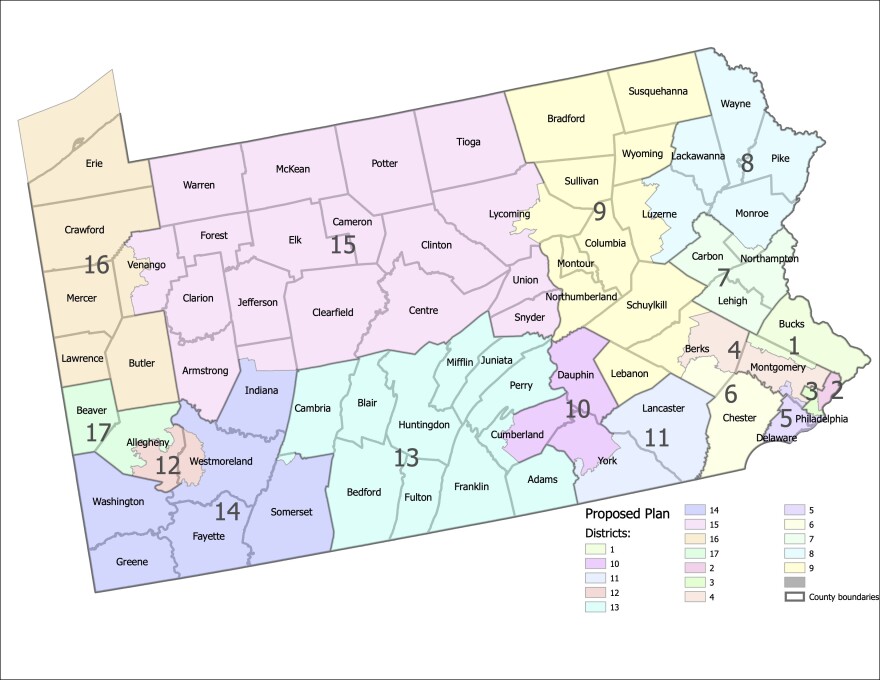All seven Pennsylvania Supreme Court justices issued opinions Wednesday regarding their 4-3 vote last month to pick a new map of the state's congressional districts, disclosing the majority relied partially on how fair the various proposals would be to the two major parties.
“We conclude that consideration of partisan fairness, when selecting a plan among several that meet traditional core criteria, is necessary to ensure that a congressional plan is reflective of and responsive to the partisan preferences of the commonwealth's voters,” wrote Chief Justice Max Baer, joined by three fellow Democrats.
He said tools that evaluate partisan fairness can help “avoid vote dilution based on political affiliation.”
The majority also rejected the argument that the 17 districts, each with nearly 765,000 voters, could not vary by as much as two voters apiece, as does the map they picked.
After Democratic Gov. Tom Wolf and the Republican majority state House and Senate deadlocked on drawing new lines for 17 congressional districts, reflecting the loss of a seat in the 2020 census, the job was left to the courts.
The state's population increases over the past decade have been concentrated in the southeast, a stronghold for Democrats, while losses have occurred in the more rural and Republican areas of Pennsylvania's northern tier and western counties.
A Republican Commonwealth Court judge, Patricia McCullough, recommended the justices go with the GOP-favored map that Wolf had vetoed. The Supreme Court instead went with an approach proposed by a group of Democratic Party-aligned voters who sued last year in an effort to get the court involved.
In a dissent, Republican Justice Sallie Mundy said that what distinguished the 13 proposed maps was how compact the shape of the districts were and how much they divided political boundaries. She concluded the best was a map submitted by group that includes southwestern Pennsylvania Republican U.S. Rep. Guy Reschenthaler.
The other Republican on the court, Justice Kevin Brobson, warned that the majority decision, “by considering numerical partisan metrics and ultimately adopting a reapportionment plan because it provides for ‘proportionality,’ avoids ‘anti-majoritarian’ results, and attempts to offset a ‘structural tilt’ in the political geography of Pennsylvania that favors Republican candidates," will result in greater involvement by the court in future partisan political disputes.
The U.S. Supreme Court on Monday declined to intervene.
Candidates are currently circulating petitions to get on the May 17 primary ballot.
The new, 17-district map creates two Pittsburgh-area seats where incumbents are not running and puts two Republican incumbents — Fred Keller and Glenn Thompson — into a single district. Keller has said he will not seek another term in Congress this year.
Pennsylvania’s congressional delegation now consists of nine Republicans and nine Democrats.




